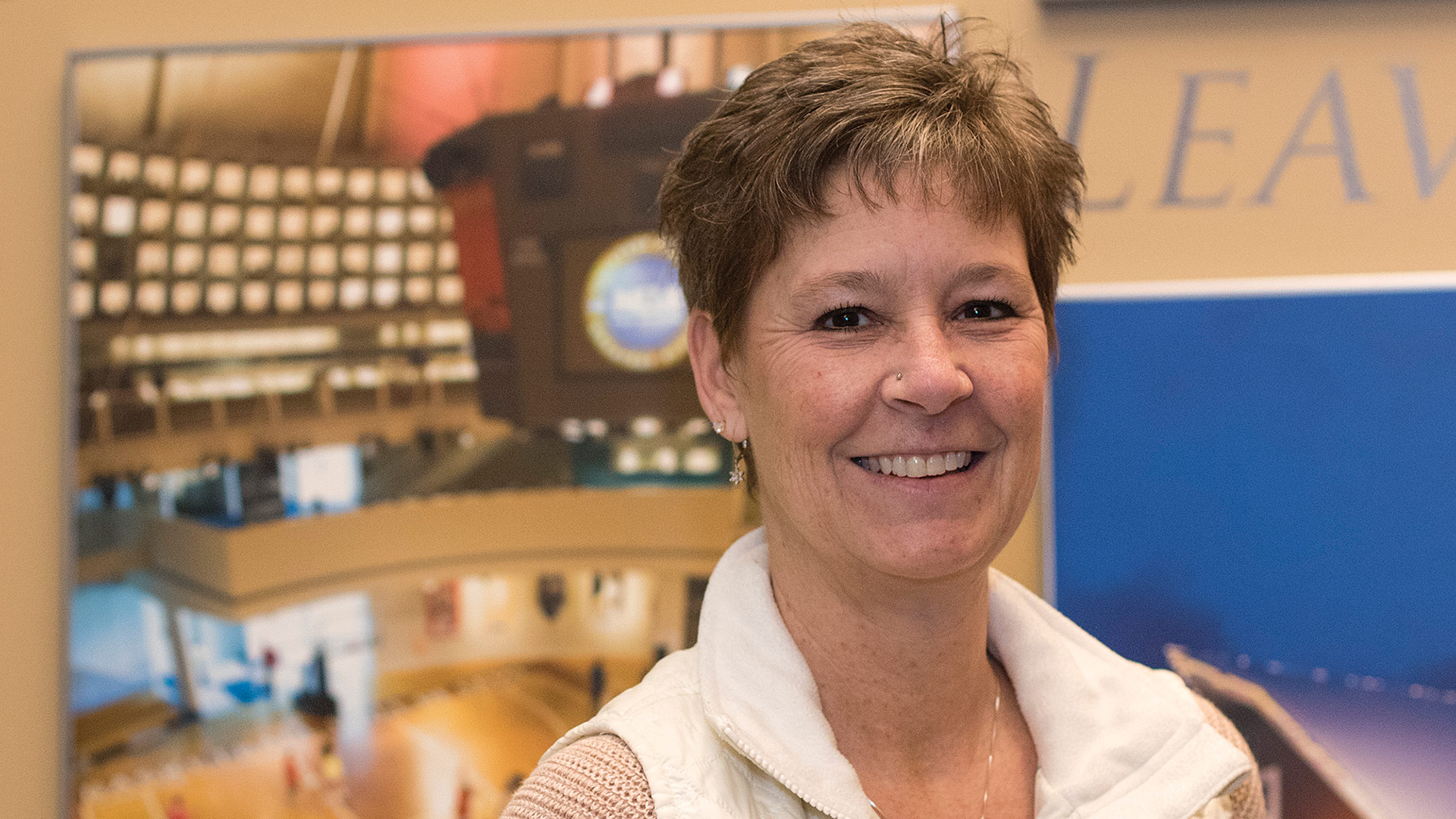Baby Steps
 After more than two months of a widespread economic shutdown, Massachusetts is opening its economy again — sort of. The plan, announced by Gov. Charlie Baker on May 18, allows some businesses to open their doors under tight health restrictions, while others — including restaurants, spas, and most retail — have to wait longer to invite the public inside. What’s got businesses frustrated is not knowing exactly when their turn will come — and the financial impact they continue to endure every week they have to wait.
After more than two months of a widespread economic shutdown, Massachusetts is opening its economy again — sort of. The plan, announced by Gov. Charlie Baker on May 18, allows some businesses to open their doors under tight health restrictions, while others — including restaurants, spas, and most retail — have to wait longer to invite the public inside. What’s got businesses frustrated is not knowing exactly when their turn will come — and the financial impact they continue to endure every week they have to wait.
Massachusetts is the 15th-most populous state in the U.S., yet, the day Gov. Charlie Baker released his economic reopening report, it had reported the fourth-most total COVID-19 cases in the country.
So, the reopening was never going to be a free-for-all.
“We were all very aware that, no matter what we went forward with, there will be more infection and more deaths,” said Easthampton Mayor Nicole LaChapelle, one of 17 members of the governor’s Reopening Advisory Board. “While the public-health metrics are numbers, statistics, they’re also people — they’re your neighbors, maybe your mother or father.
“People want to open,” she told BusinessWest, “but they don’t want to put people at risk — themselves, their customers, their parents. The compassion is remarkable.”
That’s why it was no surprise that Massachusetts is reopening slowly and cautiously. Last week, manufacturing facilities, construction sites, and places of worship were allowed to return under strict guidelines (more on those later), and on May 25, the list will expand to offices (except in Boston) and labs; hair salons, pet grooming, and car washes; retail, with remote fulfillment and curbside pickup only; beaches, parks, drive-in movies, and some athletic fields and courts; fishing, hunting, and boating; and outdoor gardens, zoos, reserves, and public installations.
That covers what Baker is calling phase 1, with three more reopening phases to follow. Conspicuously not on the phase-1 list? Restaurants, spas, daycare centers, in-store retail … it’s a long list. And, for many business leaders, a frustrating one.

Nancy Creed says businesses in phase 1 got the clarity they were seeking, but those in phase 2 are still waiting.
“There’s certainly an appreciation for public health, but there also needs to be some common sense, and I think it’s very hard to explain why it’s OK for 200 people to be in line at Home Depot, but a small, downtown store can’t have two or three people in it,” Rick Sullivan, president and CEO of the Economic Development Council of Western Massachusetts, told BusinessWest.
“Certainly everyone has to be smart,” he added, “but I think there needs to be more common sense brought into the reopening. I appreciate where the governor is — the balancing act — and I think the reopening committee did a great job with outreach, but there needs to be clear guidance and some common sense.”
Others were less diplomatic.
“While protecting public health is important and something we all support, it defies logic to declare that the opening of barbershops and hair salons is safe, while claiming opening small retail businesses is not,” Jon Hurst, president of the Retailers Assoc. of Massachusetts, said in a statement.
“The same is true for the opening of churches and large office buildings,” he went on. “Having two or three people in a retail shop is every bit as safe, if not safer, than the allowable businesses in phase 1. The Baker administration has consistently picked winners and losers during this crisis, and it is disappointing to see that trend continue in the reopening plan.”
As president of the Springfield Regional Chamber, Nancy Creed has been in touch with her members for almost three months now on the impact of the COVID-19 pandemic. She, like Sullivan, understands the delicate balance the state is walking.
“When we were part of the presentation to the advisory board, the last thing I said to them was, ‘our businesses are struggling, but they are surviving this. What they can’t survive is for it to happen again.”
“Certain sectors thought they’d be in phase 1, so there’s always that frustration,” she told BusinessWest. “When we were part of the presentation to the advisory board, the last thing I said to them was, ‘our businesses are struggling, but they are surviving this. What they can’t survive is for it to happen again. So we need to be smart about it and make sure we’re doing everything we can so the reopening is successful, and this doesn’t happen again.’”
She knows that’s not easy for many small businesses to hear, particularly ones with no revenue stream at all during this time.
“This is different for everyone, but businesses are muddling through it, pivoting, doing the things they need to do for basic economic survival,” she added. “But if it happens again, I don’t think we’ll survive the second round.”
Hence, baby steps, and a multi-phase reopening that offers real hope for many sectors, but continues to draw no small amount of criticism as well.
Guidance — and Lack Thereof
According to Baker’s plan, each phase of the reopening will be guided by public-health data that will be continually monitored and used to determine advancement to future phases. The goal of a phased plan is to methodically allow businesses, services, and activities to resume, while avoiding a resurgence of COVID-19 that could overwhelm the state’s healthcare system and erase the progress made so far.
Each phase will last a minimum of three weeks and could last longer before moving to the next phase. If public-health data trends are negative, specific industries, regions, or even the entire Commonwealth may need to return to an earlier phase.
Nicole LaChapelle
“When talking to businesses and different groups and unions, the question was always, ‘what are the barriers right now, what are your biggest challenges, but more importantly, what do you need to see happen in order for your industry to open, and what is the timeline for that to happen for you?’”
In addition, success in earlier phases will refine criteria for future phases, including travel, gathering sizes, as well as additional openings in retail, restaurants, lodging, arts, entertainment, fitness centers, museums, youth sports, and other activities.
“Going in, the goals were, how do we safely and slowly open the Massachusetts economy?” LaChapelle said. “And that is directly tied to public-health metrics. When talking to businesses and different groups and unions, the question was always, ‘what are the barriers right now, what are your biggest challenges, but more importantly, what do you need to see happen in order for your industry to open, and what is the timeline for that to happen for you?’”
It was helpful, she explained, to seek input from myriad sectors and businesses — those deemed essential and never forced to shutter; those that had to pivot, such as retailers boosting their online presence and manufacturers shifting to making masks and face shields; and businesses that have been effectively sidelined.
“The board, at no point, even at the beginning, was like, ‘let’s get this thing going and roll it out immediately,’” she added, noting that she understands the need for companies to start ramping back up. “They may be a little disappointed, but they’ve been very understanding. There’s some education we have to do, but nobody is really upside-down about it.”
In order to reopen, businesses must develop a written COVID-19 control plan outlining how its workplace will prevent the spread of the virus. They must also create and display posters and signs describing rules for maintaining social distancing, hygiene protocols, as well as cleaning and disinfecting.
“I think there needs to be an appreciation for restaurants and small Main Street businesses that are not going to be able to just comply with the state’s protocols immediately.”
Sullivan appreciates the attention to public-health concerns, but said it offers little comfort for businesses stuck in an as-yet-undefined phase 2 — or beyond. While the reopening plan gives clear guidance for businesses in phase 1, those in phase 2 don’t even get a target date they can work toward or a set of protocols they can begin to develop. And that lack of clarity has led to frustration.
“I do think many businesses, especially smaller businesses, were kind of expecting more things to open up,” he said. “I think there needs to be an appreciation for restaurants and small Main Street businesses that are not going to be able to just comply with the state’s protocols immediately. They’ll need to plan, order some equipment, and spend some time reorganizing their business, because it’s going to be different than it was pre-COVID. And it’s not something they can do overnight. Many businesses are just looking at lead time — they want to open sooner than later, but they want lead time so they can be ready to go.”
Creed agreed.
“I think what businesses wanted, at least in the beginning, was some clarity about the guidelines, about the timelines, about the standards, about the checklists, all those things, so they can create their own plan — and that was achieved, at least for phase 1,” she explained. “But I am hearing the phase-2 people saying, ‘well, I wanted to be able to plan, but I don’t have enough guidance right now,’ so there’s some frustration.”
The Massachusetts Restaurant Assoc. said as much in a statement following the plan’s release.
“Obviously, every restaurateur is disappointed with the lack of a defined reopening date in today’s announcement,” it noted. “Massachusetts restaurants need their suppliers to have time to restock perishable inventory before it can be delivered to them. They need to notify employees about returning to work and conduct other due diligence to ensure restaurants can open effectively.”
Safety and Numbers
Across Massachusetts, the reopening plan sparked a spectrum of reactions, all acknowledging the competing health and economic interests in play, but expressing different levels of understanding and frustration — and often both.
“We realize that every employer in Massachusetts would love to hear that they can reopen immediately. But we also acknowledge that a phased reopening balances the need to restart the economy with the need to manage a public-health crisis that continues to claim 100 lives a day in Massachusetts,” John Regan, president and CEO of the Associated Industries of Massachusetts, noted in a statement.
Even as some businesses start to reopen and others plan to do so, the state Department of Public Health updated its stay-at-home advisory, replacing it with a new “Safer at Home” advisory, which instructs everyone to stay home unless they are headed to a newly opened facility or activity. It also advises those over age 65 and those with underlying health conditions to stay home, with the exception of trips required for healthcare, groceries, or that are otherwise absolutely necessary. All residents must continue to wear a face covering in public when social distancing is not possible, and individuals are advised to wash their hands frequently and be vigilant in monitoring for symptoms. Restrictions on gatherings of more than 10 people remain in effect.
The state also encourages working from home when possible, and Baker’s office released a list of 54 large companies — employing about 150,000 workers among them — that have issued statements extending work-from-home policies for the remainder of the spring, with numerous reporting intentions to extend into the summer and, in some cases, for the remainder of 2020.
“As MassMutual develops our plan to gradually return to the office, the health and safety of our employees is our top priority,” said Roger Crandall, chairman, president, and CEO of MassMutual, noting that his employees will return to the office no sooner than the beginning of September.
“We expect to come back in a slow, phased manner,” he added. “We will continue to monitor and reassess and will be factoring in a number of considerations — from federal, state, and local government and health officials’ guidance to a sustained reduction in cases in our operating locations, to broader available testing and our employees’ personal circumstances and comfort.”
Patrick Sullivan, Massachusetts President of People’s United Bank, is also promoting continued work from home where possible.
“People’s United Bank is assessing re-entry conditions and protocols to ensure the safety of our team members and our customers,” he said. “Our approach will balance the needs of employees with the needs of the business. As we have been successful in pivoting and adjusting to working from home, we will continue to encourage this behavior.”
Still, those are businesses that can at least operate in most aspects. Retail stores can’t so easily adjust — and have been devastated by the inability to invite shoppers into their stores.
“We are incredibly disappointed with how Governor Baker has treated retail businesses throughout the health and economic crisis. Massachusetts has been one of the most hostile states in the nation toward small retailers.”
“We are incredibly disappointed with how Governor Baker has treated retail businesses throughout the health and economic crisis. Massachusetts has been one of the most hostile states in the nation toward small retailers,” said Hurst, noting that Massachusetts stores are losing Memorial Day weekend at a time when other states have let them open up shop by now. “Retail businesses are ready and able to open safely now with a limited number of people in stores and for appointment shopping. By not allowing that until late June, many small, Main Street businesses will close forever.”
That’s not hyperbole for small businesses of many kinds. Matt Haskins, who operates the popular Matt’s Barber Shop in Amherst, said a recent grant from the Downtown Amherst Foundation has helped him stay afloat at a time when he doesn’t know when college business will return.
“Just five minutes before [receiving word of the grant], I was on a phone call discussing if Matt’s Barber Shop was going to make it or break it,” he told foundation officials. “The grant helps me think we’re going to make it.”
So will being able to open his doors again on May 25. And that’s all most business owners want right now — a target. Creed hears that, but at the same time, she’s encouraged by recent chamber polling suggesting the percentage of business owners who feel they’ll survive this crisis is rising.
“What that says to me is people are finding a way to make sure it doesn’t put them out of business,” she said, “which shows the resilience of the businesses we have here.”
Yes, they have resilience, in spades. Now, they want clarity — and some hard dates.
Joseph Bednar can be reached at [email protected]












